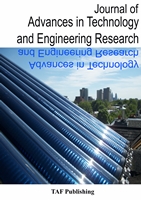
|
Published online: 2019
Abstract
Current communication technology can ease sharing multimedia data such as images, text, graphics, audio, and videos online or offline. A multimedia editing tool can be downloaded freely and used efficiently to be editing the content of video clips. To solve integrity and originality, video clips are very challenging and require some complex methods. How to ensure that the content or the structure of the video provided or downloaded from the internet is original and just as recorded? Video forgery is a technique to generate fake videos with malicious intent by inserting, deleting, duplication their contents. Therefore, the video's originality can be questioned and need to be verified. Video forgery detection is intended to determine the originality of video content, whether the video has undergone any unethical change. The video forgery detection technique has two approaches, active and passive. This study focuses on the detection of tampering video using a passive approach because it is not dependent on pre-embedded information to determine the originality of the video. The passive approach will be extracting this feature from the video and analyzing them for different forgery detection. A passive approach is better than the active one as it relies on fake video available and features and its properties without needing the original video. The research focus was to apply a passive approach to develop a new model for video forgery detection. This model will be used to build a powerful tool for detecting video authenticity. Therefore, it can help certain parties, especially those involved in legal activities. |